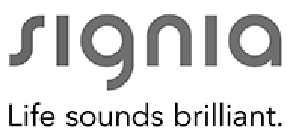Getting new hearing aids marks an exciting step toward better hearing. Yet this journey comes with an adjustment period that requires patience and practice. The brain needs time to relearn how to process sounds it hasn’t heard for a while, making the hearing aid adjustment process both rewarding and challenging.
This guide provides practical tips for a smooth transition to life with hearing devices. We’ll explore managing expectations, practicing listening techniques, and caring for your devices to help you maximize your investment in better hearing.
Set Realistic Expectations
Your brain requires time to adapt to the sounds flooding back into your world. Think of it like learning a new language – the process happens gradually, not overnight.
Many new users feel overwhelmed by sounds they haven’t heard in years. Your own voice might sound different. The refrigerator’s hum, keyboard clicks, or paper rustling might seem unusually loud. These reactions are completely normal.
Start with short wearing periods:
- Begin with 2-3 hours daily for the first week
- Increase by one hour each week
- Build up to full-day wear over 4-6 weeks
This gradual approach prevents sensory overload and gives your brain time to adjust. Remember, you’re not just learning to hear again – you’re training your brain to filter and prioritize sounds effectively.
Practice Active Listening
Specific exercises can accelerate your adaptation to hearing devices. Like physical therapy for your ears, these activities strengthen your listening skills.
Start in Quiet Environments
Begin with one-on-one conversations at home. Sit face-to-face with family members and practice following their speech patterns. The visual cues from lip reading and facial expressions support your hearing aids’ work.
Listen to Audiobooks and Podcasts
Audio content helps you focus on speech without visual distractions. Start with familiar books or topics you enjoy. The narrator’s consistent voice provides excellent practice for speech recognition.
Choose content with:
- Clear narration
- Familiar subjects
- Moderate speaking pace
Identify Everyday Sounds
Make a game of recognizing sounds around your house. Can you identify:
- The microwave beeping
- Birds chirping outside
- Water running through pipes
- Cars passing by
This sound identification exercise helps your brain categorize and process different audio inputs more effectively.
Get Comfortable with Your Devices
Proper fit and maintenance ensure your hearing aids perform at their best. Discomfort or technical issues can derail your adjustment progress.
Check the Fit
Your hearing aids should feel secure but comfortable. Signs of poor fit include:
- Pain or pressure in your ear
- Devices falling out frequently
- Whistling or feedback sounds
- Skin irritation
Contact your audiologist immediately if you experience any discomfort. Minor adjustments can make a significant difference in your daily experience.
Learn Basic Care
Daily maintenance keeps your devices functioning properly:
Daily cleaning routine:
- Wipe down with a dry cloth
- Remove earwax with provided tools
- Check for moisture damage
Power management:
- Change batteries when low-battery signals occur
- Charge rechargeable models nightly
- Store devices in a dry, safe place
Regular maintenance prevents costly repairs and ensures consistent performance during your adjustment period.
Moving Forward with Confidence
Adjusting to hearing aids requires patience, practice, and proper care. Be gentle with yourself during this transition – your brain is doing remarkable work relearning how to process sound.
The temporary adjustment phase leads to a richer, more connected hearing experience. Most users report significant improvement within 2-3 months of consistent wear.
Remember these key points:
- Start slowly and build wearing time gradually
- Practice listening in various environments
- Keep your devices clean and well-maintained
- Stay patient with the process
If you’re experiencing issues or have questions about your devices, don’t hesitate to schedule a follow-up appointment with our audiology team. We’re here to support your journey to better hearing every step of the way.







